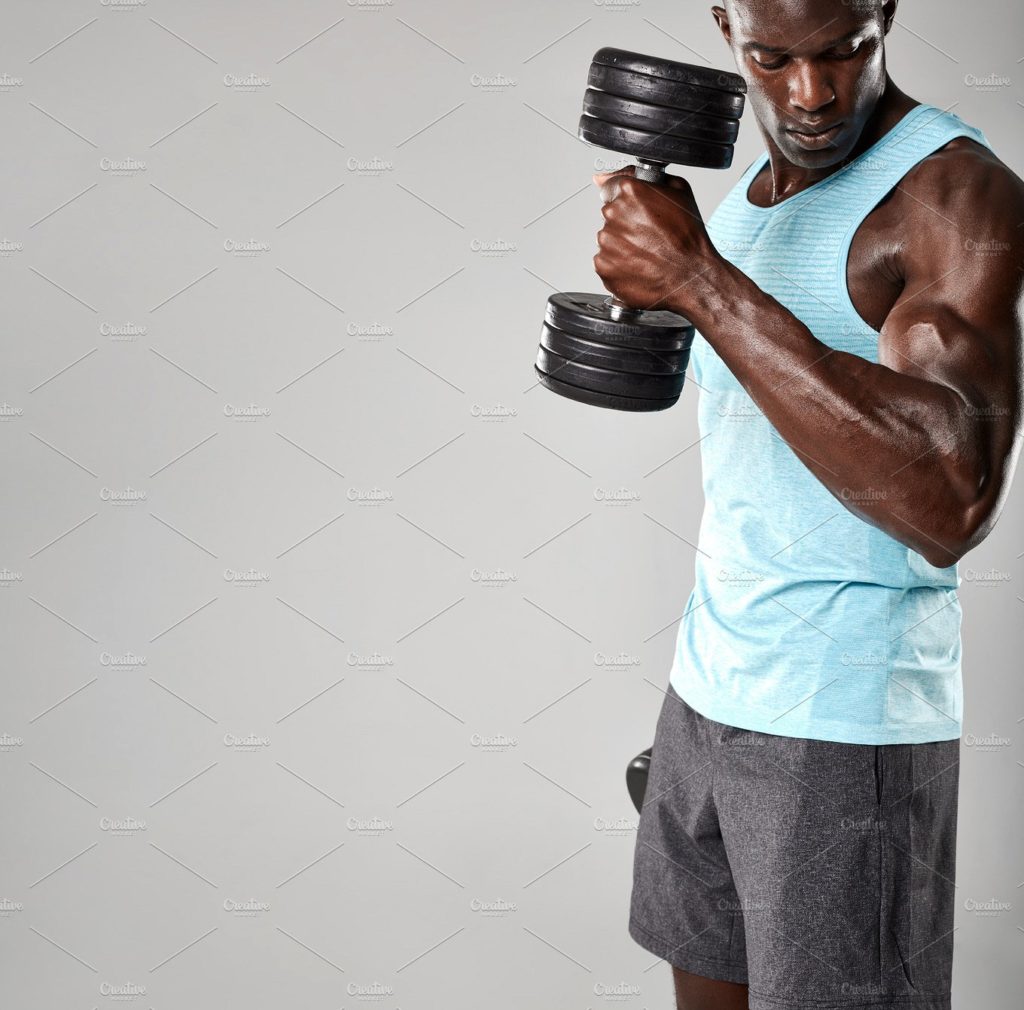Your workout is meant to build your body up, not break it down. But injuries from working out happen way too often nonetheless.
In fact, a 2017 study from the Consumer Product Safety Commission found that there were more than 526,000 emergency room visits prompted by gym injuries that year.
But let’s be honest: most gym injuries are totally preventable. Here are the 6 most common ones — and how you can avoid them.
1) Lumbar strain.
The cause: Straining the muscles of the lower back can occur in numerous ways. Typically, these injuries are the result of “suboptimal posture/technique, excessive load on the back with an activity, repetitive movements, and/or twisting motions – especially with weightlifting,” Christopher Hogrefe, MD, FACEP, orthopedic surgeon at Northwestern Medicine, told MensHealth.com.
How to prevent back pain: Work on strengthening your core. (You can start by trying out some of these moves.) “Trying to optimize one’s flexibility can also be beneficial. Sometimes hamstrings that are too tight, for instance, can result in lower back issues,” says Hogrefe.
You should also focus on improving your posture. (Try one of these 12 awesome exercises.) “Even when you are not working out, try to maintain good posture throughout the day,” says Hogrefe. “And avoid bending at the waist to lift things. Utilize the lower body/legs in such settings in order to reduce the strain and stress on your lower back.”
Try a wall sit to strengthen your back and offer more support.
“Keep your back flat on a wall, knees bent, with no gap between your back and the wall, with your arms straight out,” Dominic King, DO, sports medicine orthopedist at the Cleveland Clinic Sports Health Center, told MensHealth.com.
When to see a doctor: For most of the injuries on this list, you should adhere to the PRICE method (PRICE stands for protection, rest, ice, compression and elevation) and stay off the injured area for a few days. But any time you have pain radiating from your back down your legs, it is time to seek a medical opinion. “Numbness or tingling or burning may signal a disc herniation,” says King.
2) Hamstring strain.
The cause: Hamstring pulls or strains involve the muscles in the back of the thigh.
“They occur when these muscles are overstretched rapidly, usually when someone accelerates quickly from a neutral or stationary position,” says Dr. Hogrefe. “Envision a runner at the start of a race or a softball player running out of the batter’s box after lacing a double into the right field corner.”
How to treat them: “Hamstring strains in particular are fickle injuries, notorious for re-injury,” says Dr. Hogrefe. Depending on how severe your injury is, you’ll want to wait 2-6 weeks before jumping back into hamstring-heavy activities.
How to prevent hamstring injury: Two words: warm up.
“Dynamic exercises that involve stretching while going through range of motion will be more beneficial than static stretches (i.e., holding a stretch for a period of time.) Exercises like lunges, forward leg swings, and leg crossovers should help,” says Hogrefe.
And never (we repeat, NEVER) lock your knees. “When your joint is completely extended, you put it at risk for injury because it has all the pressure under a heavy load,” says King.
When to see the doctor: “The dreaded hamstring region ‘pop’ when engaged in significant activity probably warrants a more in-depth evaluation,” says Hogrefe. It could be a sign of a hamstring pull or tear. If you’re in significant pain when you sit down or are walking with a limp, you should also seek a medical opinion.
3) Groin pull.
The cause: First things first – it could be a number of muscles in the groin region giving you trouble.
“There are hip, pelvic, and even some abdominal wall muscles or tendons that could factor into this injury. When a patient states he ‘pulled his groin’, I know that I have a bit of work to do in order to identify the root cause,” says Hogrefe.
Typically, however, these injuries are associated with side-to-side movement, often due to over-stretching of the muscles in this region.
How to treat it: “Compressing the area can be helpful in rehabilitation as well; compression shorts are often useful for this purpose,” says Hogrefe. (Try this pair from Under Armour for $53.99.) And rest is key, which usually takes between 3-6 weeks.
How to prevent a groin injury: Stick with dynamic stretching to warm up your legs. You should also grab a resistance band and work on strengthening thoseinner thigh and hip muscles.
Be sure to listen to your body. “If these muscles start to feel sore or fatigued, they may be overworked and teetering on the precipice of injury,” says Hogrefe.
When to see a doctor: If you notice a significant amount of bruising or a bulge, you should get it checked out: you might have a hernia.”Hernias can either result from or masquerade as groin pulls, and their management may differ from a more straightforward, isolated groin muscle/tendon injury,” says Hogrefe.
4) Rotator cuff tendonitis.
The cause: Your rotator cuff is made up of four muscles and tendons, which help to move your shoulder in all of its natural directions, explains Hogrefe.”Individuals engaged in throwing (e.g. baseball and softball) and racket sports (e.g. tennis and racquetball) are susceptible to this injury. High-intensity interval training workouts can lead to it as well,” he says.
How to treat it: Much like other muscle and tendon injuries, rotator cuff tendinitis can be managed by icing your shoulder and using anti-inflammatory medications (unless contraindicated). And it goes without saying that you should avoid any activities that affect the injured area for a few days.
How to prevent it: Once you’ve recovered, Hogrefe recommends using a resistance band to strengthen the individual rotator cuff muscles. And when you go back to lifting, it’s important to never lose sight of your hands. “Never let your hands go further behind head/back,” says King. “You will end up putting too much force on your rotator cuff.
When to see a doctor: “When you can no longer lift that double latte without significant pain, or any time that you experience weakness in the shoulder with activities of daily living, you should reach out for medical assistance,” says Hogrefe. These are indications that you may have torn one of the muscles that make up the rotator cuff.
5) Tennis elbow.
The cause: Tennis elbow involves injury or damage to the muscles and tendons that extend the forearm and wrist that attach to the outside portion of the elbow.
“Repetitive activities can contribute to this condition. Any activities that involve regular extension of the wrist and forearm can incite tennis elbow, including golf,” says Hogrefe.
How to treat it: You can grab a counter force elbow strap (like this one for $19.99 on Amazon) to alleviate pressure on the affected muscle/tendon. “These tend to be most beneficial in the first six weeks following the onset of symptoms,” says Dr. Hogrefe.
How to prevent it: Work on strengthening your arms and shoulders by strapping on cuff weights to your wrists and doing 3 sets of 15-20 reps of side-lying external rotations.
When to see a doctor: “Tennis elbow typically resolves for most individuals with rest,” says Dr. Hogrefe. But if your symptoms persist for more than six weeks or your elbow/forearm feels weak, you should see a doctor for more testing.

